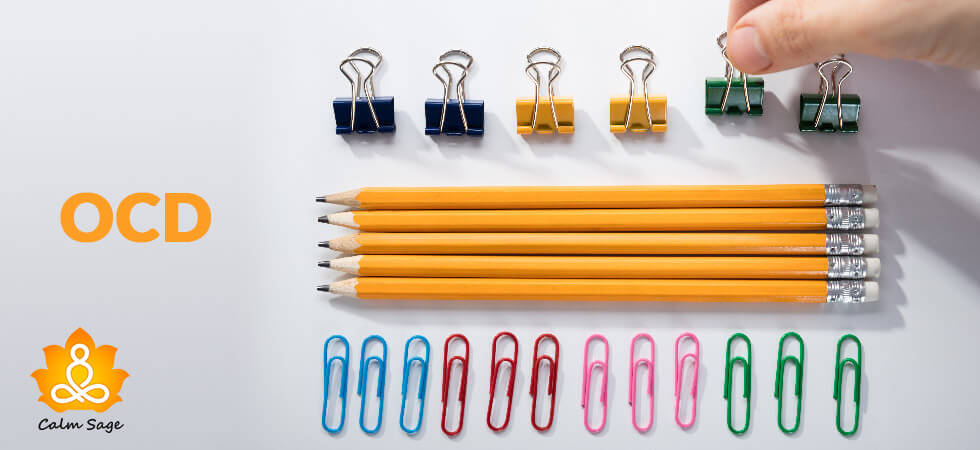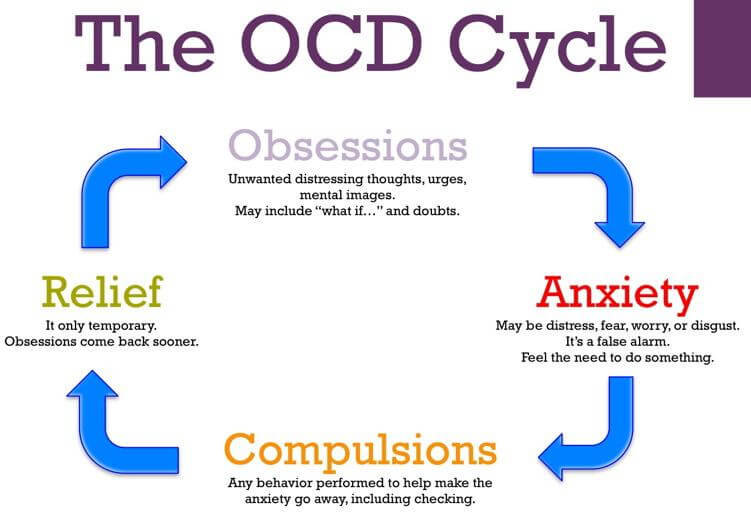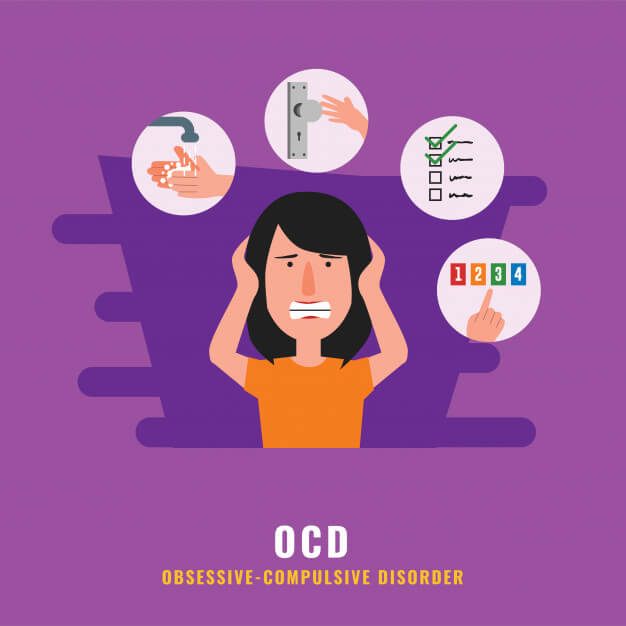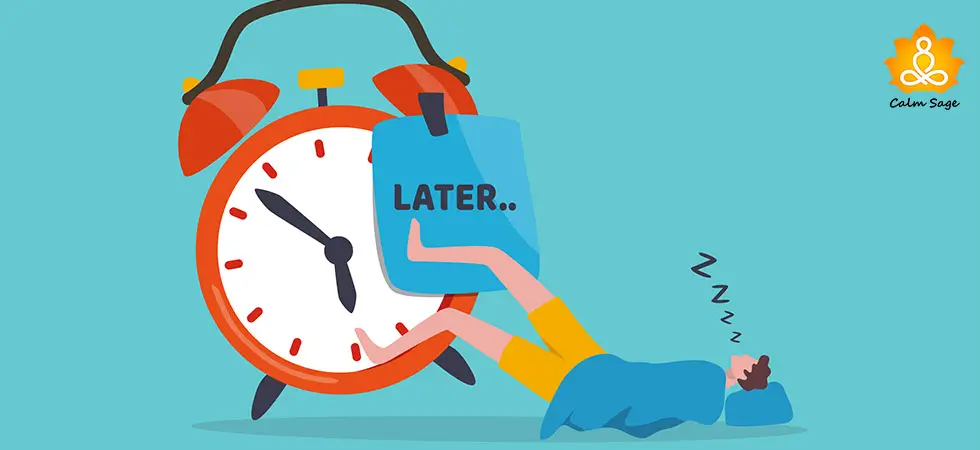Understanding and Managing Your OCD: A Complete Guide

Do you have someone in your contacts who keeps on checking the locks or keeps cleaning the floor again and again? Or have you heard of anyone else doing it? If your answer is a “Yes” or even a “Maybe” you know exactly what I am talking about! OCD.
Obsessive-compulsive disorder or OCD is one of the most common anxiety disorders that are known to be assessed. Nearly 1 in 40 people experience OCD according to available statistics. It, therefore, becomes important that we educate ourselves about it, for self and others around us. After all, mental health matters!
The understanding and management of OCD begin by understanding what OCD is, symptoms of OCD, and its causes too.
What is OCD?
Obsessive-compulsive disorder can be defined as a mental health state wherein an individual has recurrent thoughts that seem out of proportion (obsessions). Following these thoughts, an individual performs repetitive actions that will help reduce the anxiety accompanying them. This way a cycle of OCD starts. Unlike overthinking OCD differs on the following grounds:
- These thoughts take up at least an hour a day.
- These thoughts and actions are beyond your control.
- They aren’t enjoyable.
- They interfere with work, your social life, or another part of life.
OCD Cycle
During my clinical days, the first course of treatment that we used to give to OCD clients was to tell them about the cycle of OCD. This helps them become aware of this repetitive pattern that they are practicing. So, this is how a typical OCD Cycle looks like:

Symptoms of OCD
The symptoms of Obsessive-Compulsive Disorder (OCD) as per DSM-5 are:
A. Presence of obsessions, compulsions, or both:
Obsessions are defined by (1) and (2):
1. Recurrent and persistent thoughts urge, or impulses that are experienced, at some time during the disturbance, as intrusive and unwanted, and that in most individuals cause marked anxiety or distress.
2. The individual attempts to ignore or suppress such thoughts, urges, or images, or to neutralize them with some other thought or action (i.e., by performing a compulsion).
Compulsions are defined by (1) and (2):
1. Repetitive behaviors (e.g., hand washing, ordering, checking) or mental acts (e.g., praying, counting, repeating words silently) that the individual feels driven to perform in response to an obsession or according to rules that must be applied rigidly.
2. The behaviors or mental acts are aimed at preventing or reducing anxiety or distress, or preventing some dreaded event or situation; however, these behaviors or mental acts are not connected in a realistic way with what they are designed to neutralize or prevent, or are clearly excessive.
B. The obsessions or compulsions are time-consuming (e.g., take more than 1 hour per day) or cause clinically significant distress or impairment in social, occupational, or other important areas of functioning.
C. The obsessive-compulsive symptoms are not attributable to the physiological effects of a substance (e.g., a drug of abuse, a medication) or another medical condition.
D. The disturbance is not better explained by the symptoms of another mental disorder.
Disclaimer: These symptoms are presented to create awareness. Don’t use them for self-diagnosis. If you can relate with some or all of these symptoms seeking help from experts is advised.
OCD Types
Yes, there is no one form of OCD. There are many types of OCD, however, four general categories involve:
- Contamination: This involves fear of getting dirty along with the compulsion of cleaning.
- Checking: This involves checking on locks, alarm systems, gas systems, light switches, and more. It also includes thinking such as having different medical conditions like schizophrenia.
- Symmetry: Also referred to as ordering this type of OCD is highlighted by the need of having things organized and lined in a certain set pattern.
- Rumination: The thought version of symmetry is rumination and intrusive thoughts. It is marked with a line of thought often disturbing.

Causes of OCD:
Just like any other mental health condition, there is no single cause of OCD. Some of the major causes that track to OCD are:
- Genetics and hereditary factors.
- Chemical abnormalities in the brain.
- Distorted beliefs.
- Learned compulsions which became repetitive.
- Stressful life events could be risk factors.
The next part of managing OCD is to look for helpful strategies. We are sharing an OCD management toolbox with you.
Tool 1 to Manage OCD: This tool is known as Exposure and Response Prevention. This tool helps us to face fears gradually and helps you break the OCD cycle.
Step 1: Understand Your OCD (Deeper).
By reading so far you have understood what OCD is. Now it is time to dive deeper. Identify triggers that are bringing you obsessions and compulsions. It is advised that you maintain an obsessive fear monitoring form and pen down minimum 3 instances a day in it. This will help you become aware of your OCD signs, triggers, and acts. Monitor them for a week.
Step 2: Monitor Your Fears & Building Fear Ladder
After a week of maintaining your obsessive fear monitoring form you can create a fear ladder. Place the most fearful situation at the top and the least fear provoking situation at the end.
Step 3: Climb the Fear Ladder
Now it is time to address and progress on your fears. Start from the least fear provoking obsession and slowly work on the ladder. To begin with it is advised to keep someone you trust in your surroundings when you expose yourself with a fearful situation. Practicing relaxation techniques alongside is also recommended.
Step 4: Keep Basics In Mind
While you are facing your fears through exposures keep these few basic points in mind:
Don’t rush on the ladder of fear. Remember one step at a time.
Use modeling. Ask someone who doesn’t fear this situation to demonstrate it for you.
Ask for help. If the exposure is excessively overwhelming or this technique doesn’t seem to work please seek help from experts,
Tool 2 to Manage OCD: This tool is known as Rewind Technique.
Rewind technique is a fear diminishing tool generally used in treating phobias and trauma clients. The aim of this technique is to make clients relaxed about not engaging in compulsions. Generally you can practice it with an experienced practitioner and then you can make it a part of your life eventually. Here you can learn more about Rewind Technique.
Tool 3 to Manage OCD: Interrupt the Pattern to break the OCD Cycle.
As discussed above OCD is like a vicious cycle. It is important to interrupt this cycle and break the pattern to stop OCD to develop further. The best technique to achieve this is hypnotic “scrambling” which loosen such patterns.
The trick here is that performing the acts in the wrong pattern or manner helps you break the OCD cycle. By doing so you understand one important aspect of OCD that your behaviour is not as unchangeable or fixed as it appears to be.
Example: If a person checks locks for 30 times before leaving home can interrupt the pattern by doing this:
1. Do 30 seconds of deep breathing before going to check the lock for the first time.
2. Check it for the first 10 times (uninterrupted).
3. Next, count till 100 or recite alphabets backward before checking the locks again,
4. Then check the lock for another 15 times.
5. Again either practice deep breathing or any distracting activity.
6. Finally check the door for another 5 times.
This way the pattern is interrupted and your anxiety is controlled by activities other than compulsions! Slowly you can progress on reducing the numbers too.

Other Tools: Along with these three major tools there are some other tools that will help you further. This includes:
2. Practice Stress Management.
3. Practice Meditation and Mindfulness.
4. Use Relaxation Techniques.
5. Journal Your Thoughts and Feelings.
6. Use Herbal Remedies (St. John’s Wort or Kava).
7. Join Self-help groups.
Now you are all set to manage OCD with these self-help tips.
But, remember these self-help tips works best in collaboration with help from experts. So, do consult a mental health professional and seek their help to manage your OCD.
If you plan to try any of these self-help tips do share the output with us in the comments section below.
More Power to You!!!




















